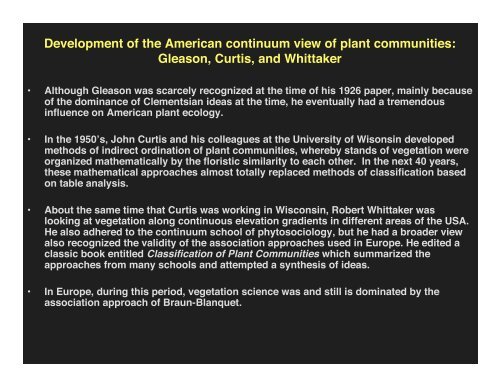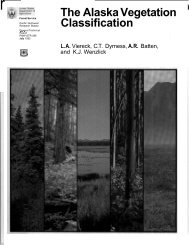Lesson 12 - Alaska Geobotany Center
Lesson 12 - Alaska Geobotany Center
Lesson 12 - Alaska Geobotany Center
You also want an ePaper? Increase the reach of your titles
YUMPU automatically turns print PDFs into web optimized ePapers that Google loves.
Development of the American continuum view of plant communities:Gleason, Curtis, and Whittaker• Although Gleason was scarcely recognized at the time of his 1926 paper, mainly becauseof the dominance of Clementsian ideas at the time, he eventually had a tremendousinfluence on American plant ecology.• In the 1950 s, John Curtis and his colleagues at the University of Wisonsin developedmethods of indirect ordination of plant communities, whereby stands of vegetation wereorganized mathematically by the floristic similarity to each other. In the next 40 years,these mathematical approaches almost totally replaced methods of classification basedon table analysis.• About the same time that Curtis was working in Wisconsin, Robert Whittaker waslooking at vegetation along continuous elevation gradients in different areas of the USA.He also adhered to the continuum school of phytosociology, but he had a broader viewalso recognized the validity of the association approaches used in Europe. He edited aclassic book entitled Classification of Plant Communities which summarized theapproaches from many schools and attempted a synthesis of ideas.• In Europe, during this period, vegetation science was and still is dominated by theassociation approach of Braun-Blanquet.
















